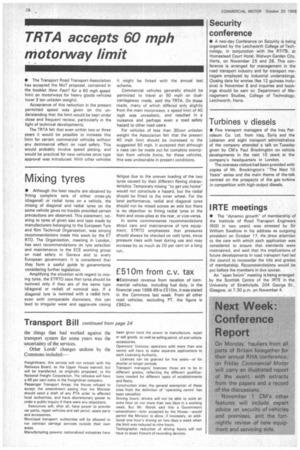Mixing tyres
Page 30

If you've noticed an error in this article please click here to report it so we can fix it.
• Although the best results are obtained by fitting complete sets of either cross-ply (diagonal) or radial tyres on a vehicle, the mixing of diagonal and radial tyres on the same vehicle gives no trouble provided certain precautions are observed. This statement, relating to tyres of given size and type made by manufacturers belonging to the European Tyre and Rim Technical Organization, was among recommendations made this week by the ET RTO. The Organization, meeting in London, has sent recommendations on tyre selection and maintenance to the ECE working group on road safety in Geneva and to every European government. It is considered that they form a useful guide to governments considering further legislation.
Amplifying the situation with regard to mixing tyres, the ETRTO says that tyres should be twinned only if they are of the same type (diagonal or radial) of nominal size. If a diagonal tyre is twinned with a radial tyre, even with comparable diameters, this can lead to irregular wear and aggravate casing fatigue due to the uneven loading of the two tyres caused by their different flexing characteristics. Temporary mixing "to get you home" would not constitute a hazard, but the radial should be fitted to the inner wheel. For the best performance, radial and diagonal tyres should not be mixed across an axle but there is no objection to fitting radial tyres at the front and cross-plies at the rear, or vice-versa.
In some commonsense recommendations about care and maintenance of tyre equipment, ETRTO emphasizes that pressures should always he checked on cold tyres, since pressure rises with heat during use and may increase by as much as 20 per cent on a long run.
















































































































